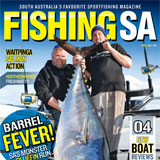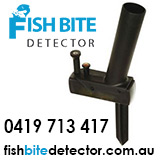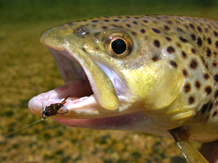Species ID
View AllBrown Trout
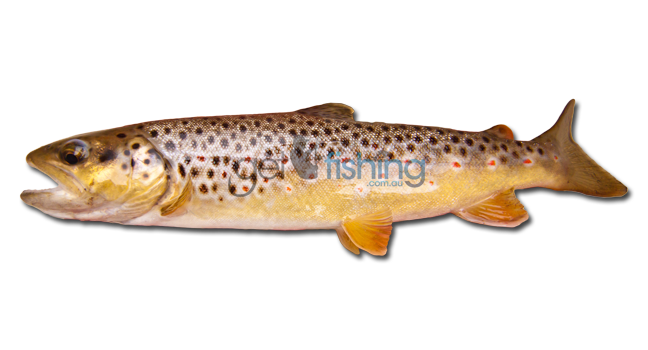
Brown trout are one of Australia’s favourite freshwater angling species. The scenery in which these amazing fish live makes targeting them all the more joyous. They are fantastic fun to chase on artificial lures and fly and put up a great fight on light gear. Not quite as aesthetically stunning as Rainbow trout, yet in their own right they’re still an amazing and beautiful looking fish.
They are a native species to Europe and Western Asia and were introduced to Australia for aquaculture and recreational fishing in 1864. Brown trout are quite smooth when handled with a soft feeling body and fins. They are usually brown to olive in colour, being darker on top and lighter towards the belly. They have a forked tail, a large head and an equally large mouth that extends backward to below the eye. The upper body, gill covers and top fins are heavily covered with dark spots, of which larger spots may be surrounded by a red halo.
Other names
Brownie, Loch Leven Trout, Sea Trout
Common size
40cm
Related species
Rainbow trout (Oncorhynchus mykiss), Atlantic salmon (Salmo salar), Chinook Salmon (Oncorhynchus tshawytscha), Brook trout (Salvelinus fontinalis)
Lifespan
At least 5-6 years
Habitat
Brown trout are a freshwater species suited to clear, well oxygenated cold water between 4-19 degrees Celsius (slightly cooler than the optimum range for Rainbow trout). In other countries they will migrate between fresh and saltwater to breeding but in Australia this is rare, but some fish in coastal streams do move out to sea, for example in Port Phillip Bay in VIC. Brown trout have a preference for river and stream habits with fast flowing water and stone or gravel bottoms, but also thrive in deep water impoundments. Browns prefer water greater than 45cm deep and with extensive sections of water over 70cm. These depths and high water flow are ideal and will generally facilitate a better food source and thus larger numbers of quality fish than shallower streams.
Reproduction
The average size of Brown trout caught by recreational anglers is around 40cm, however they do grow quite large and can reach sizes up to 14kg and 90cm in Australian waters. They are relatively fast-growing and mature at approximately two to three years of age. They spawn in the cooler months of the year (water temp between 2-12 degrees Celsius), in streams with gravel or small stone substrate. The female digs a redd (small trough) in the gravel and lays her eggs which are simultaneously fertilised by a nearby male and covered in gravel. Larvae remain in the redd after hatching and feed off the yolk sac for a further 4-6 weeks, depending on water temperature. After this the small ‘fry’ leave the redd and begin to feed on their own.
Diet
Brown trout are predatory fish that feed on a variety of invertebrates and small fish. Their diet consists of larval and adult insects such as nymphs, midges and beetles, worms, molluscs, yabbies, and small fish such as minnows and the introduced pest species Redfin perch.
Catch care
Catch and release fishing is a growing trend in Australian freshwater angling and those that practice this style of fishing have got to be given credit for their actions. In saying that, there is no harm in taking a couple of fish when in need of a feed and if you are going to do so look after it properly. Immediately dispatch of the fish humanely, bleed it, and keep chilled until you get home.
If you plan to catch and release remember these few tips:
- Use barb-less hooks for easier removal
- Carefully handle the fish without dropping it and gently place back into the water
- Cut the line if the fish is deeply hooked
- When removing the the hook and/or taking photographs aim get the fish back into the water asap
- Use soft, knot-less landing nets.
Information courtesy Department of Fisheries WA, and DPI Fisheries VIC.
In Australia, Brown trout are distributed throughout freshwater lakes and streams in the south east of the country, including NSW, VIC, TAS and SA, as well as south-west WA. Browns are regularly stocked in impoundments and waterways but in case where suitable habitat exists they have formed self-maintaining populations.
4 stars. There’s no doubt Brown trout are a great tasting fish, and for some Australian anglers they are a favourite. In some instances the flavour can be influenced by natural factors such as diet, spawning, and stress. An example of this is after spawning, when the fish are often worn out the flesh can lose it’s beautiful pink-red colour. In this case the fish are better off smoked or returned to the water.
They are a nutritional choice for the table as they are low in fat and high in protein. Their orange-red to pink flesh is quite subtle and fish of a smaller size are well suited to be cooked whole or butterflied. They are also fine to scale and fillet before cooking and if prepared this way the skin is best left on. Like most fish they are best eaten fresh with 24 hours of catching. Around the world they are cooked in countless recipes. In Australia many choose to have their trout baked, grilled, steamed, poached, barbecued, fried and of course the old favourite smoked trout. In your more simple dishes you might find that a touch of salt and/or pepper will do wonders to enhance the flavour of the fish.
Information courtesy of Andrew Badullovich, NSW.
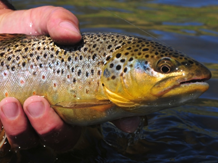
- Are a member of the family Salmonidae Salmonidae (salmon, trout, chars, freshwater whitefishes and graylings)
- Spots are often reddish
- Tail has few if any spots
- Were introduced to Australian waters for recreational fishing and aquaculture in 1864
- In their native habitat they can reach 16kg and 1m in length
- In Australia they grow to 14kg and 90cm in length
- Juveniles roughly the size of your finger are known as ‘fingerlings‘
- Mature males develop an upward hooked bottom jaw
- Good eating







